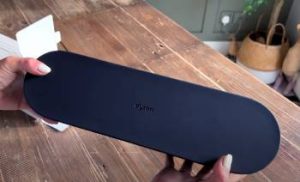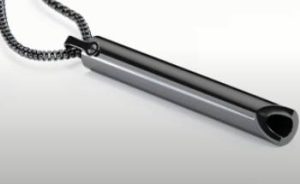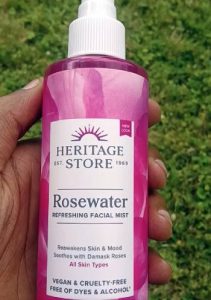If you’re dealing with stubborn toenail fungus, athlete’s foot, or ringworm, you know how frustrating it can be to find a treatment that actually works. I’ve tried several over-the-counter antifungal creams, only to be disappointed time and time again. That’s why I was skeptical but hopeful when I came across Tineacide Antifungal Cream.
After giving it a fair shot, I can confidently say this product is worth considering. While it’s not an instant cure, those who are patient and consistent see real results. If you’re looking for a doctor-recommended, non-prescription antifungal that actually fights the root of the problem, Tineacide is a strong contender.
What Makes Tineacide Antifungal Cream Stand Out?
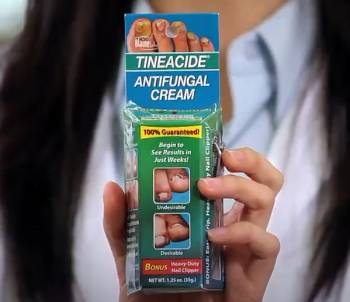
Tineacide antifungal cream stands out because it goes beyond simply treating surface-level fungal infections—it actively works to penetrate deep into affected areas for long-term relief. Unlike many over-the-counter antifungal creams that focus primarily on athlete’s foot or ringworm, Tineacide is formulated to tackle stubborn toenail fungus, which is notoriously difficult to treat.
Its active ingredient, miconazole nitrate, is clinically proven to kill the fungus responsible for nail and foot infections, while added ingredients like urea help soften thick, brittle nails, allowing the medication to reach deeper. This dual-action approach makes Tineacide more effective for persistent cases compared to standard antifungal creams.
Another key factor that sets Tineacide apart is its combination of natural ingredients, including tea tree oil and lavender oil, which have antifungal and soothing properties. These additions help reduce irritation and inflammation while also promoting healthier skin and nails. Many users also appreciate that Tineacide is non-prescription yet recommended by doctors, making it a convenient and trusted option without the need for a medical visit.
Unlike some treatments that require months of use before showing any improvement, Tineacide has been reported to deliver noticeable results within a few months when used consistently. It also works as a great adjunct to oral antifungal medications, helping to support and speed up the healing process.
Whether you’re dealing with athlete’s foot, jock itch, ringworm, or stubborn nail fungus, Tineacide’s powerful formula and deep-penetrating action make it a standout choice in the crowded antifungal market.
My Experience Using Tineacide
Like many others, I was battling a persistent toenail fungus that refused to go away. I had tried home remedies like vinegar and Listerine soaks, but they only seemed to make things worse. When I started using Tineacide, I followed a strict routine—applying it twice a day, clipping away damaged nail portions, and keeping my feet dry.
At first, I didn’t notice much difference. But after a few months, the new nail growth looked healthier, and the infected parts started to fade. A full cure took almost a year, but seeing steady improvement kept me motivated. The key was patience and consistency.
How to Get the Most Out of Tineacide Antifungal Cream?
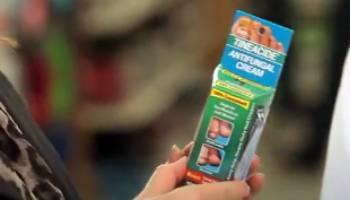
To get the most out of Tineacide antifungal cream, consistency and proper application are key. Start by cleaning and drying the affected area thoroughly before each application. Fungus thrives in moist environments, so ensuring your feet or nails are completely dry helps prevent further growth.
Trim and file down thick or damaged nails to allow the cream to penetrate more effectively. If you’re treating toenail fungus, consider soaking your feet beforehand to soften the nail, making it easier for the medication to reach deeper layers.
Apply a small amount of Tineacide directly to the affected area, making sure to cover the surrounding skin as well. Massage it in gently to ensure full absorption. For toenail fungus, apply the cream to the entire nail surface, including underneath the nail if possible. Let the area air dry before putting on socks or shoes. For best results, use the cream twice daily, preferably in the morning and before bed.
Maintaining a clean environment is just as important as applying the cream. Change socks daily, opt for breathable footwear, and disinfect shoes regularly to prevent reinfection. Using antifungal foot powders or sprays can also help keep feet dry and fungus-free. Be patient—fungal infections, especially toenail fungus, take time to clear up.
It can take months for a healthy nail to grow back, so stick with your treatment plan even if progress seems slow. By following these steps, you’ll maximize Tineacide’s effectiveness and improve your chances of eliminating the infection for good.
Pros and Cons of Tineacide Antifungal Cream
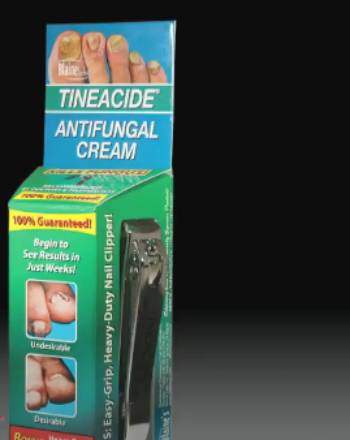
Pros:
- Doctor-recommended: Many podiatrists suggest Tineacide for treating nail fungus and other fungal infections.
- Non-prescription and easy to use: No need for a doctor’s visit—just apply it directly to affected areas.
- Multi-purpose: Works on athlete’s foot, ringworm, and jock itch, making it a great all-in-one solution.
- Includes natural ingredients: Tea tree oil and lavender oil help soothe the skin while fighting fungus.
- Softens nails for better penetration: Helps break down hard, brittle areas so the medication reaches deeper.
Cons:
- Requires long-term use: Toenail fungus can take six months to a year to fully clear up.
- Doesn’t work for severe cases: If the infection is too advanced, prescription treatments may be needed.
- Needs consistent application: Skipping doses can slow down progress or lead to relapse.
- Mild irritation possible: Some users report slight redness or sensitivity, especially on broken skin.
Also Read: My Experience With Pro Clearz Fungal Shield
Tineacide Vs. Other Antifungal Treatments
Tineacide Vs. Lotrimin Ultra
Lotrimin Ultra (butenafine hydrochloride) is a strong contender for athlete’s foot, jock itch, and ringworm. It works fast—often showing results in a week—but it’s not as effective for stubborn toenail fungus. Tineacide, on the other hand, contains miconazole nitrate and penetrates deep into the nail bed, making it a better choice for nail fungus sufferers. Lotrimin is great for quick relief, while Tineacide is better for long-term use on tough cases. If you need something for skin-based fungal infections, Lotrimin might be the winner. But for nails, Tineacide holds the advantage with its penetrating formula.
- Tineacide Vs. Lamisil
Lamisil (terbinafine) is a powerhouse antifungal that works both topically and orally. The oral version is prescription-only and highly effective for nail fungus, but it comes with potential liver side effects. The topical cream is better for skin conditions like athlete’s foot but struggles to penetrate thick nails. Tineacide, while slower, softens the nail and reaches deep into infected areas without systemic side effects. If you want the fastest route to clear nails and don’t mind taking medication, Lamisil tablets win. But for a safer, over-the-counter option with no prescription needed, Tineacide is a solid pick.
- Tineacide Vs. Tinactin
Tinactin (tolnaftate) is widely available and works well for athlete’s foot and ringworm. However, it’s not as effective for stubborn or deep-seated infections. Tineacide, with its blend of miconazole nitrate, tea tree oil, and urea, offers a more aggressive approach. Tinactin is great if you need a quick, affordable fix for a mild fungal infection, but it doesn’t provide the same level of nail penetration as Tineacide. If your fungus is lingering or has spread to the nails, Tineacide’s ability to soften and treat the affected area makes it the better choice.
- Tineacide Vs. Fungi-Nail
Fungi-Nail is a budget-friendly option that markets itself as a nail fungus treatment, but its active ingredient, undecylenic acid, primarily works on the skin rather than deep under the nail. It can be effective for athlete’s foot or mild fungal infections, but persistent cases will likely need something stronger. Tineacide, with its clinically proven formula, offers better penetration and long-term treatment. If you’re dealing with minor symptoms, Fungi-Nail might help. But if your nail fungus is advanced, Tineacide provides a more thorough and doctor-recommended approach.
- Tineacide Vs. Clotrimazole Cream
Clotrimazole is a common antifungal ingredient found in many over-the-counter creams. While effective against skin fungi like ringworm and athlete’s foot, it’s not formulated specifically for nail fungus. Tineacide, on the other hand, combines miconazole nitrate with penetrating agents like urea, allowing it to work beneath the nail surface. If you need something for a basic skin infection, clotrimazole is affordable and effective. But for stubborn, long-term nail fungus, Tineacide is the superior choice due to its targeted formula and ability to reach deep into affected nails.
Also Read: My Experience With Kerasal Nighttime Patches
Frequently Asked Questions (FAQs)
Results vary, but mild infections may improve within a few weeks. Toenail fungus takes longer—usually six months to a year. Patience and consistency are key.
Tineacide is one of the top over-the-counter options, but effectiveness depends on the infection type. For toenail fungus, prescription treatments like oral Lamisil may work faster.
Yes, but it takes time. For best results, apply it twice daily, trim affected nails regularly, and keep your feet dry.
Clean and dry the area, then apply a thin layer of cream. If treating toenails, clip away diseased parts to help the medication reach deeper. Let it absorb for at least 30 minutes before wearing socks or shoes.
Final Thoughts
If you’re looking for an over-the-counter antifungal cream that actually works, Tineacide is a solid choice. It’s not a miracle cure, but with patience and proper use, it delivers real results. Whether you’re dealing with toenail fungus, athlete’s foot, or ringworm, this doctor-recommended formula is one of the best non-prescription options available.
While severe infections may require prescription treatment, for mild to moderate cases, Tineacide is worth trying. Stick with it, follow a proper regimen, and give your nails and skin the care they need.

